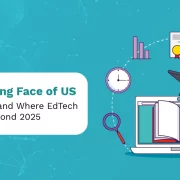Conversational learning uses social interaction theory and provides an interactive learning environment. The chatbot uses emojis and maintains ongoing engagement to facilitate this learning process. Emojis provide content more personality and give learners learning clues.
Q: What is Conversational Interfaces?
A: By engaging in natural language discussions with chatbots, digital assistants, a Conversational Interfaces technique aids students in learning and remembering information. Through interactive and personalized interactions, the interface can be customized to the needs and tastes of the learners.
Q: What are some benefits?
A: Conversational interfaces has many benefits, including personalized and adaptive learning experiences, greater motivation and engagement, real-time feedback and assessment, accessibility from anywhere at any time, and less cognitive load.
Q: How can Conversational Interfaces be integrated into existing learning environments?
A: To include conversational interfaces into already-existing learning environments, it can be introduced to learning management systems, online courses, or educational apps. This might require developing conversational scenarios and interactions that support the curriculum and learning goals as well as tailoring the learning experience using tools like artificial intelligence and natural language processing.
Q: What are some potential challenges?
A: The necessity for high-quality information and interactional design, the potential for biases and errors in machine learning algorithms, the risk of abuse and distractions, and the continuing requirement to evaluate and enhance the interface are a few potential barriers to communicative learning.
Q: How can Conversational Interfaces improve accessibility and inclusivity in education?
It can improve accessibility and inclusion in education by providing alternative teaching strategies that take into account a range of learning preferences, skills, and styles. Also, it can help students who might be reluctant to speak up in traditional classroom settings become more engaged and participate by reducing linguistic and cultural barriers, fostering a more diverse and inclusive learning environment.



